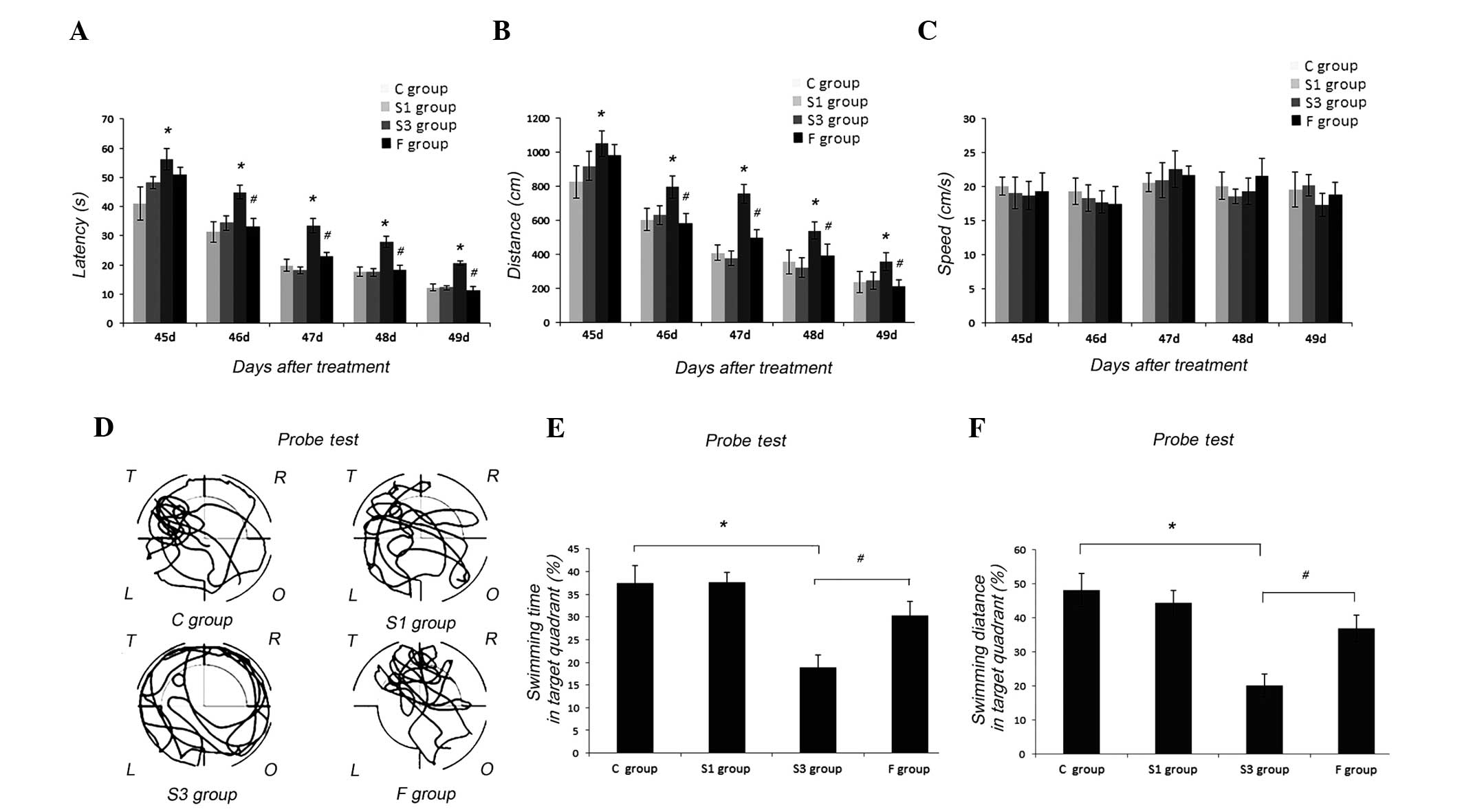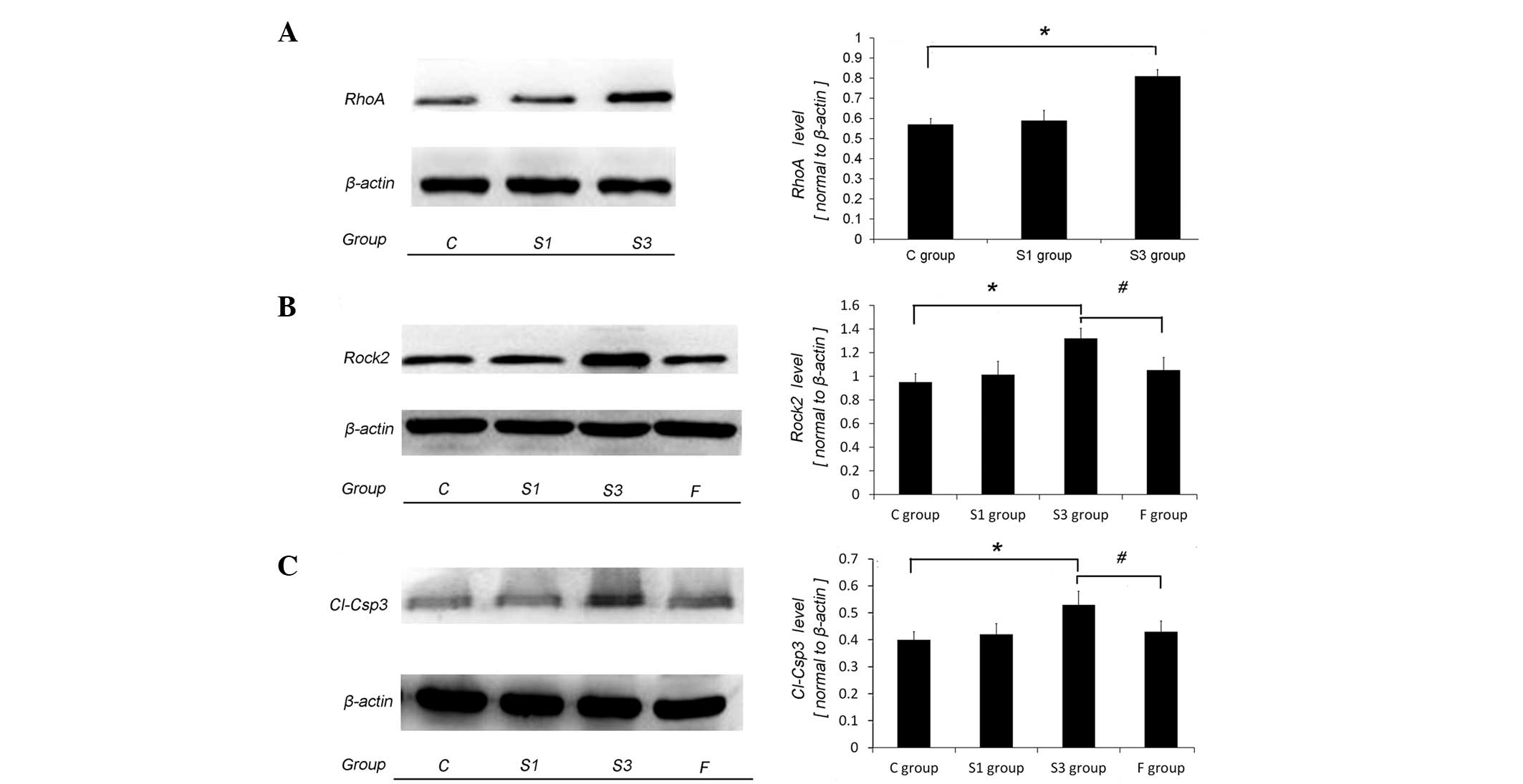|
1
|
McCann ME, Bellinger DC, Davidson AJ and
Soriano SG: Clinical research approaches to studying pediatric
anesthetic neurotoxicity. Neurotoxicology. 30:766–771. 2009.
View Article : Google Scholar : PubMed/NCBI
|
|
2
|
Wilder RT, Flick RP, Sprung J, Katusic SK,
Barbaresi WJ, Mickelson C, Gleich SJ, Schroeder DR, Weaver AL and
Warner DO: Early exposure to anesthesia and learning disabilities
in a population-based birth cohort. Anesthesiology. 110:796–804.
2009. View Article : Google Scholar : PubMed/NCBI
|
|
3
|
Sun L: Early childhood general anaesthesia
exposure and neurocognitive development. Br J Anaesth. 105 (Suppl
1):i61–i68. 2010. View Article : Google Scholar : PubMed/NCBI
|
|
4
|
Kalkman CJ, Peelen L, Moons KG, Veenhuizen
M, Bruens M, Sinnema G and de Jong TP: Behavior and development in
children and age at the time of first anesthetic exposure.
Anesthesiology. 110:805–812. 2009. View Article : Google Scholar : PubMed/NCBI
|
|
5
|
Yon JH, Daniel-Johnson J, Carter LB and
Jevtovic-Todorovic V: Anesthesia induces neuronal cell death in the
developing rat brain via the intrinsic and extrinsic apoptotic
pathways. Neuroscience. 135:815–827. 2005. View Article : Google Scholar : PubMed/NCBI
|
|
6
|
Wettschureck N and Offermanns S:
Rho/Rho-kinase mediated signaling in physiology and
pathophysiology. J Mol Med Berl. 80:629–638. 2002. View Article : Google Scholar : PubMed/NCBI
|
|
7
|
Negishi M and Katoh H: Rho family GTPases
as key regulators for neuronal network formation. J Biochem.
132:157–166. 2002. View Article : Google Scholar : PubMed/NCBI
|
|
8
|
Leong SY, Faux CH, Turbic A, Dixon KJ and
Turnley AM: The Rho kinase pathway regulates mouse adult neural
precursor cell migration. Stem Cells. 29:332–343. 2011. View Article : Google Scholar : PubMed/NCBI
|
|
9
|
Sung JK, Miao L, Calvert JW, Huang L,
Louis Harkey H and Zhang JH: A possible role of RhoA/Rho-kinase in
experimental spinal cord injury in rat. Brain Res. 959:29–38. 2003.
View Article : Google Scholar : PubMed/NCBI
|
|
10
|
Nakazawa T, Watabe AM, Tezuka T, Yoshida
Y, Yokoyama K, Umemori H, Inoue A, Okabe S, Manabe T and Yamamoto
T: p250GAP, a novel brain-enriched GTPase-activating protein for
Rho family GTPases, is involved in the N-methyl-d-aspartate
receptor signaling. Mol Biol Cell. 14:2921–2934. 2003. View Article : Google Scholar : PubMed/NCBI
|
|
11
|
Lemkuil BP, Head BP, Pearn ML, Patel HH,
Drummond JC and Patel PM: Isoflurane neurotoxicity is mediated by
p75NTR-RhoA activation and actin depolymerization. Anesthesiology.
114:49–57. 2011. View Article : Google Scholar : PubMed/NCBI
|
|
12
|
Pearn ML, Hu Y, Niesman IR, Patel HH,
Drummond JC, Roth DM, Akassoglou K, Patel PM and Head BP: Propofol
neurotoxicity is mediated by p75 neurotrophin receptor activation.
Anesthesiology. 116:352–361. 2012. View Article : Google Scholar : PubMed/NCBI
|
|
13
|
He HJ, Wang Y, Le Y, Duan KM, Yan XB, Liao
Q, Liao Y, Tong JB, Terrando N and Ouyang W: Surgery upregulates
high mobility group box-1 and disrupts the blood-brain barrier
causing cognitive dysfunction in aged rats. CNS Neurosci Ther.
18:994–1002. 2012. View Article : Google Scholar : PubMed/NCBI
|
|
14
|
Stratmann G, Sall JW, May LD, et al:
Isoflurane differentially affects neurogenesis and long-term
neurocognitive function in 60-day-old and 7-day-old rats.
Anesthesiology. 110:834–848. 2009. View Article : Google Scholar : PubMed/NCBI
|
|
15
|
Shen X, Liu Y, Xu S, Zhao Q, Guo X, Shen R
and Wang F: Early life exposure to sevoflurane impairs adulthood
spatial memory in the rat. Neurotoxicology. 39:45–56. 2013.
View Article : Google Scholar : PubMed/NCBI
|
|
16
|
Wang WY, Luo Y, Jia LJ, et al: Inhibition
of aberrant cyclin-dependent kinase 5 activity attenuates
isoflurane neurotoxicity in the developing brain.
Neuropharmacology. 77:90–99. 2014. View Article : Google Scholar : PubMed/NCBI
|
|
17
|
Yan XB, Ouyang W, Li G and Duan KM:
Involvement of neuronal nitric oxide synthase in cognitive
impairment in isoflurane-treated rats. Neurosci Lett. 506:240–244.
2012. View Article : Google Scholar : PubMed/NCBI
|
|
18
|
Zheng H, Dong Y, Xu Z, Crosby G, Culley
DJ, Zhang Y and Xie Z: Sevoflurane anesthesia in pregnant mice
induces neurotoxicity in fetal and offspring mice. Anesthesiology.
118:516–526. 2013. View Article : Google Scholar : PubMed/NCBI
|
|
19
|
Feng X, Liu JJ, Zhou X, Song FH, Yang XY,
Chen XS, Huang WQ, Zhou LH and Ye JH: Single sevoflurane exposure
decreases neuronal nitric oxide synthase levels in the hippocampus
of developing rats. Br J Anaesth. 109:225–233. 2012. View Article : Google Scholar : PubMed/NCBI
|
|
20
|
Shen X, Dong Y, Xu Z, Wang H, Miao C,
Soriano SG, Sun D, Baxter MG, Zhang Y and Xie Z: Selective
anesthesia-induced neuroinflammation in developing mouse brain and
cognitive impairment. Anesthesiology. 118:502–515. 2013. View Article : Google Scholar : PubMed/NCBI
|
|
21
|
Nakano-Kobayashi A, Kasri NN, Newey SE and
Van Aelst L: The Rho-linked mental retardation protein OPHN1
controls synaptic vesicle endocytosis via endophilin A1. Curr Biol.
19:1133–1139. 2009. View Article : Google Scholar : PubMed/NCBI
|











